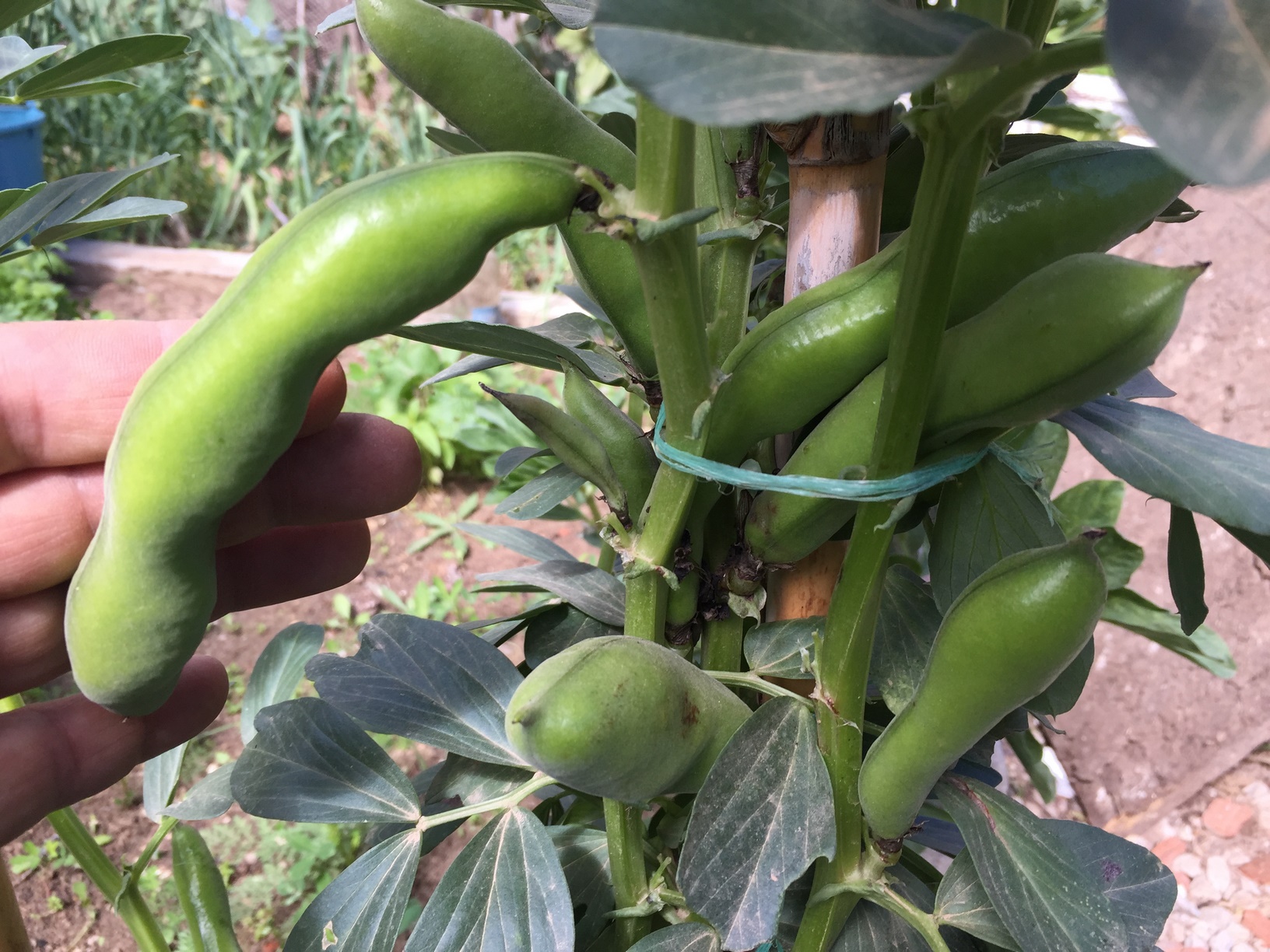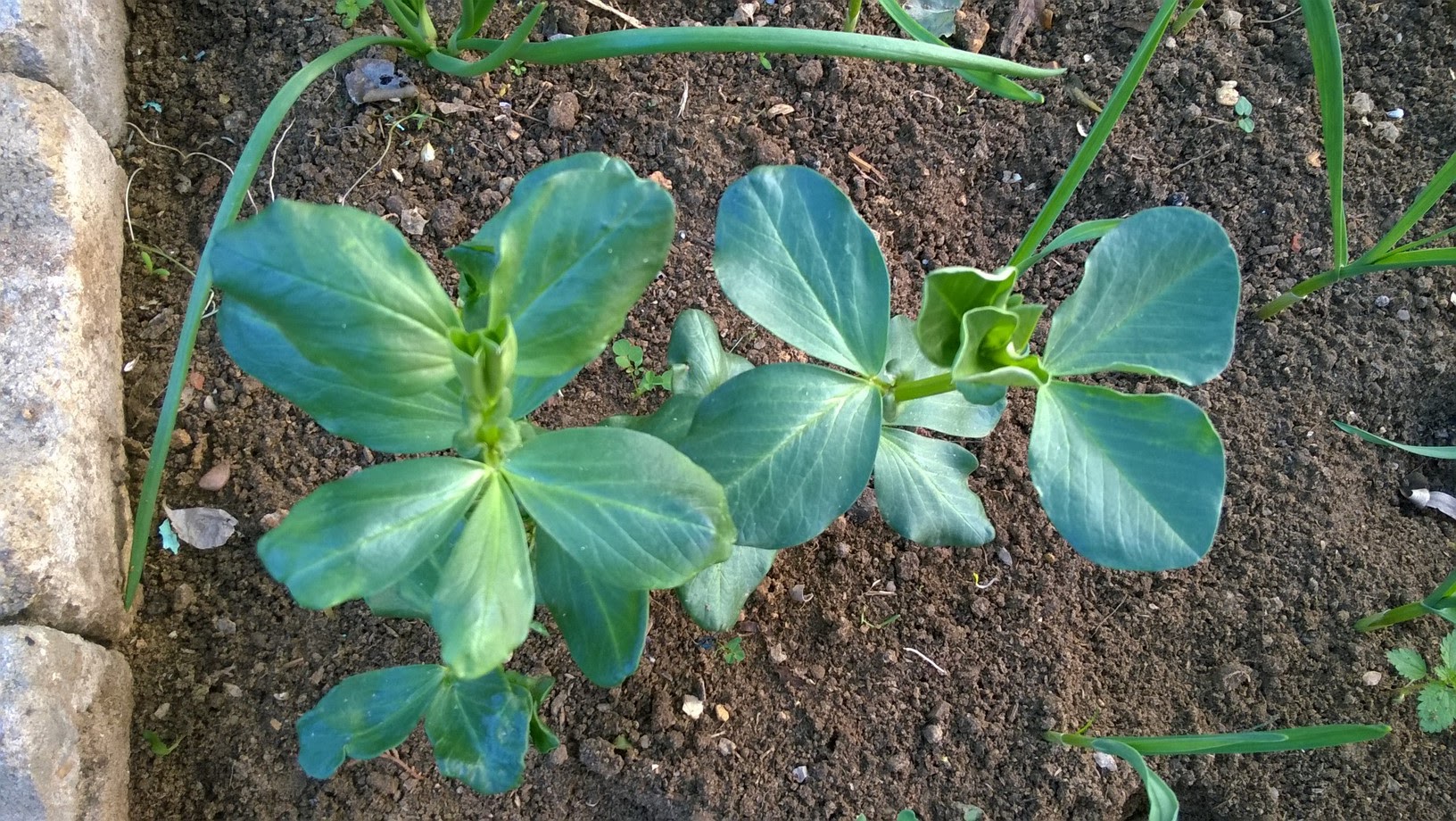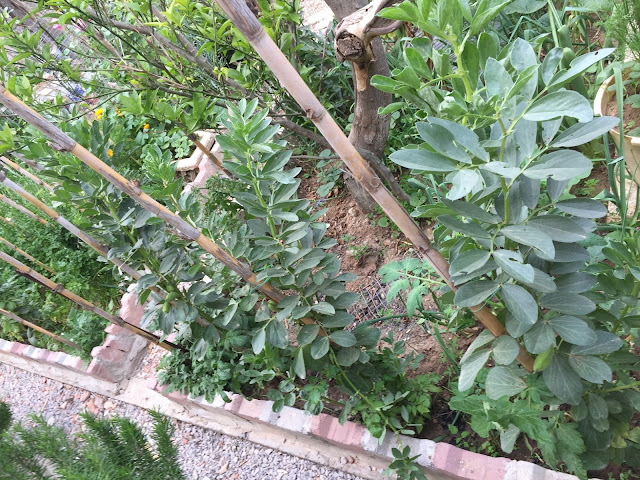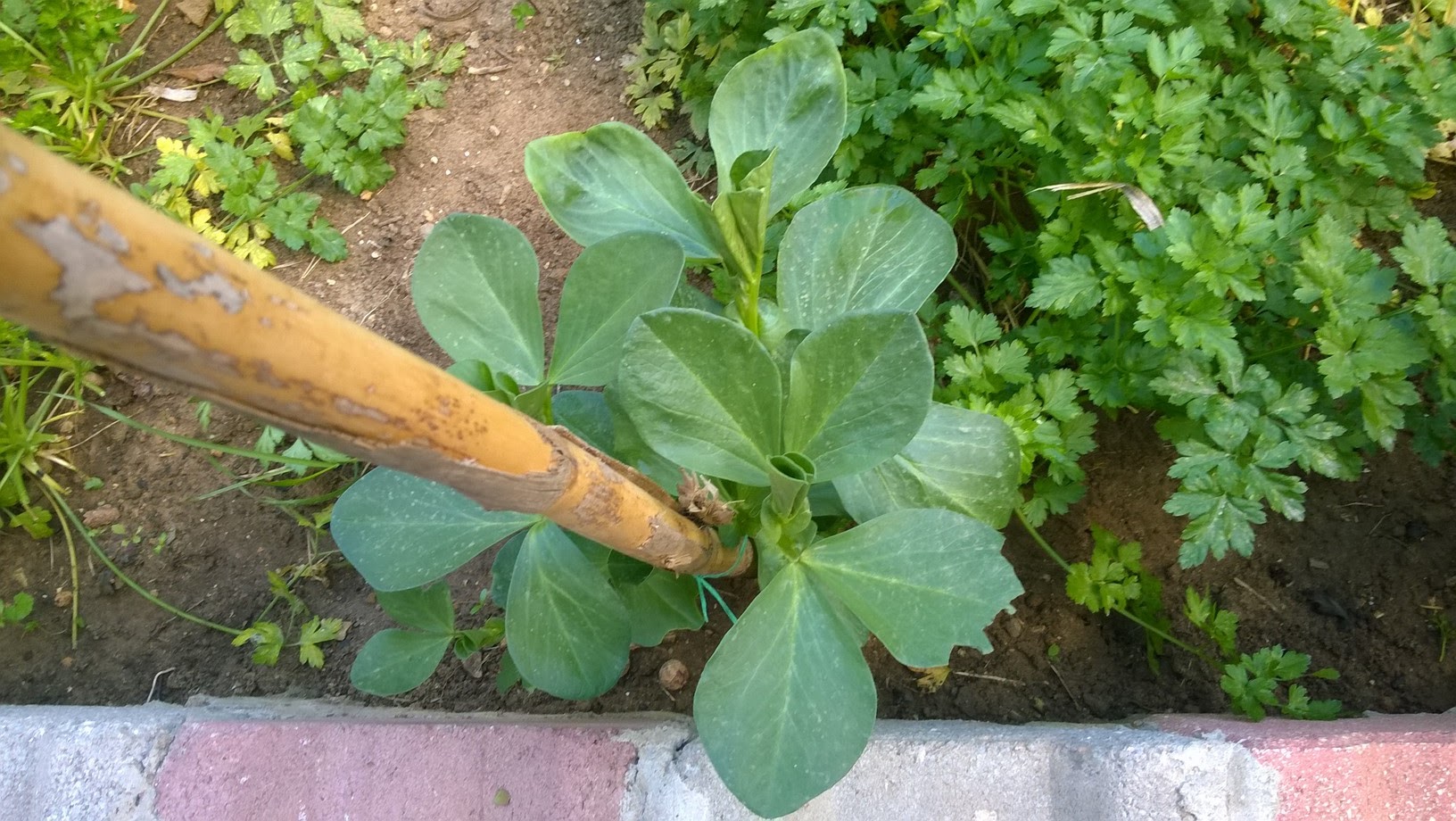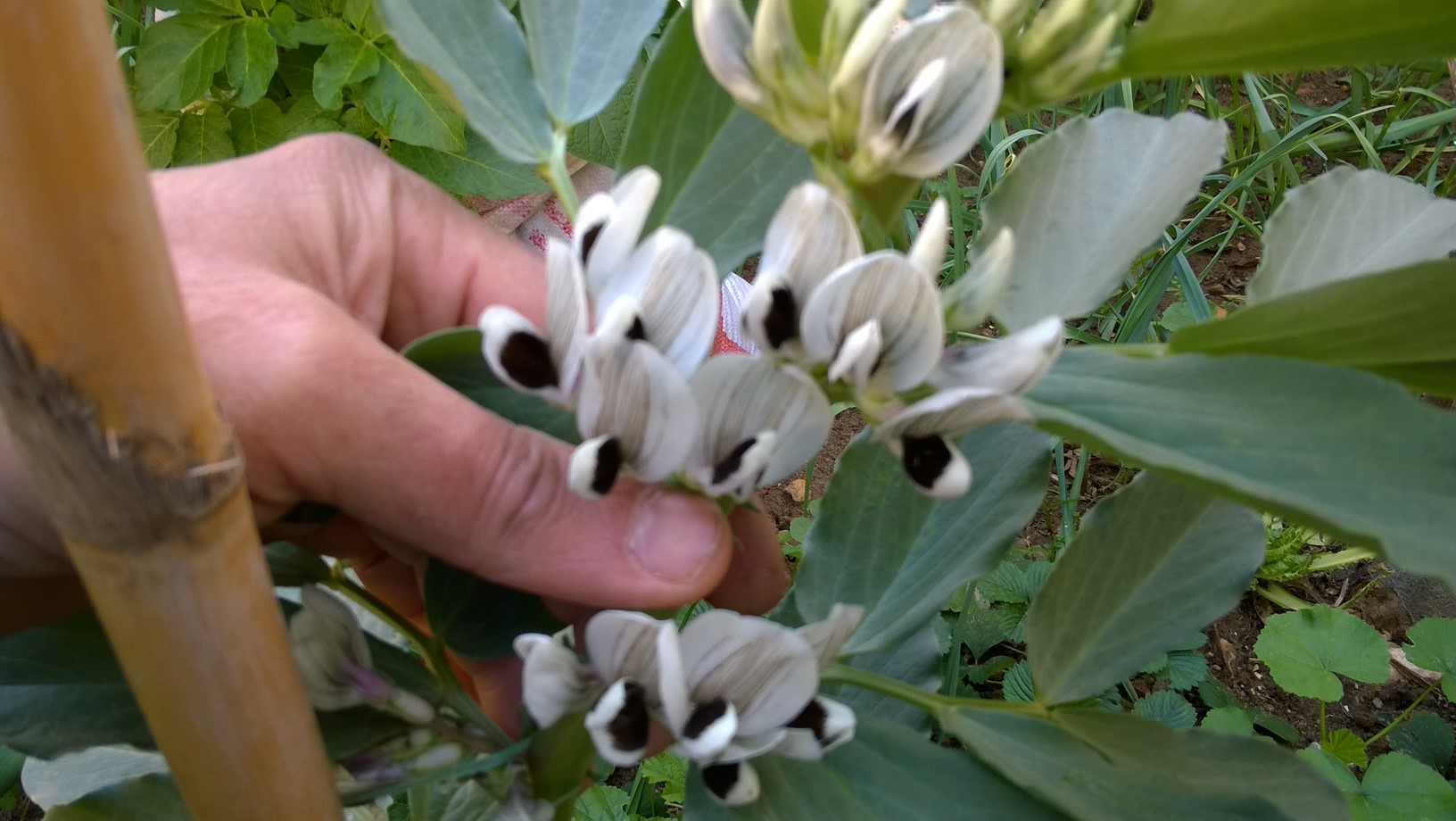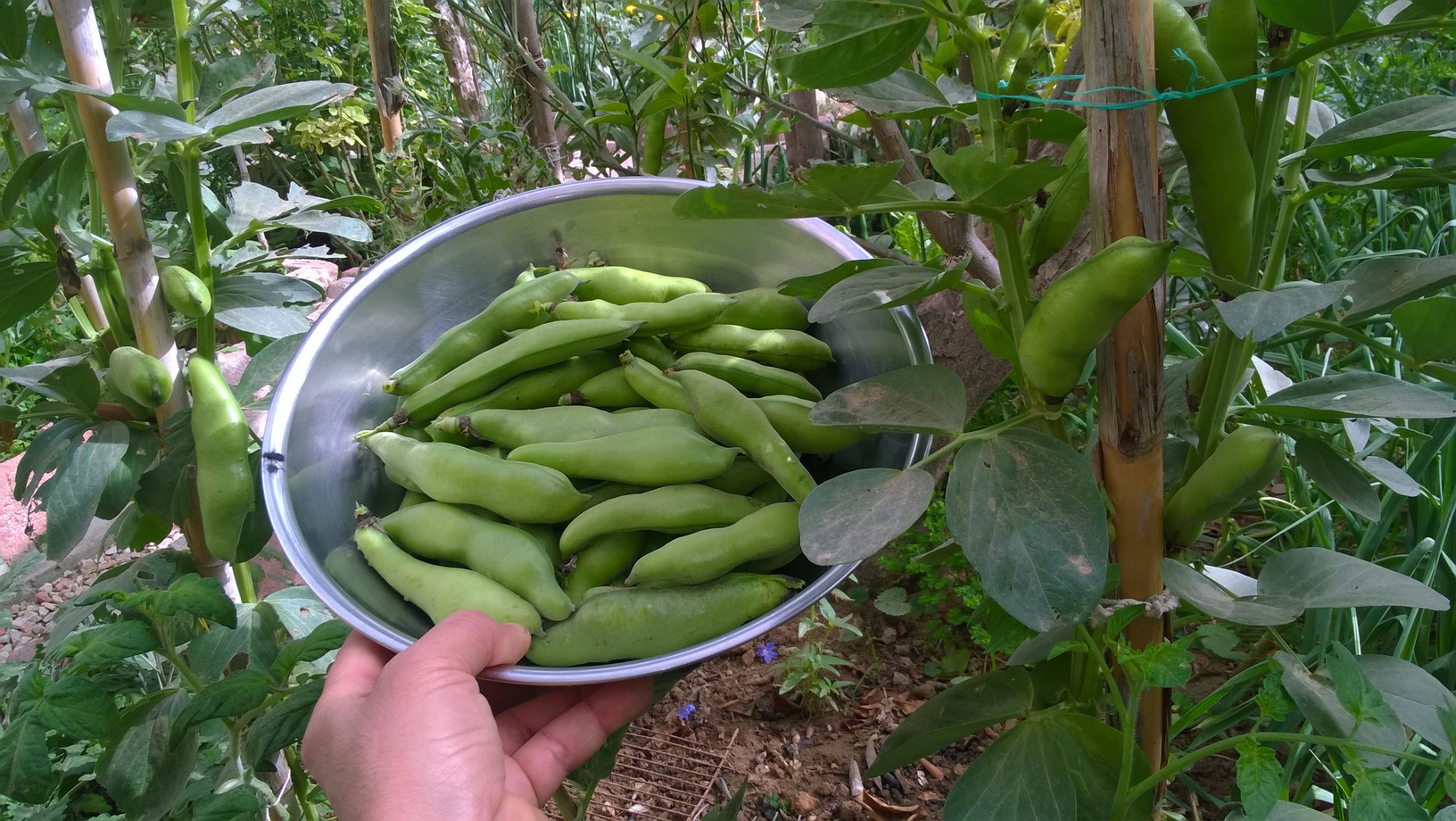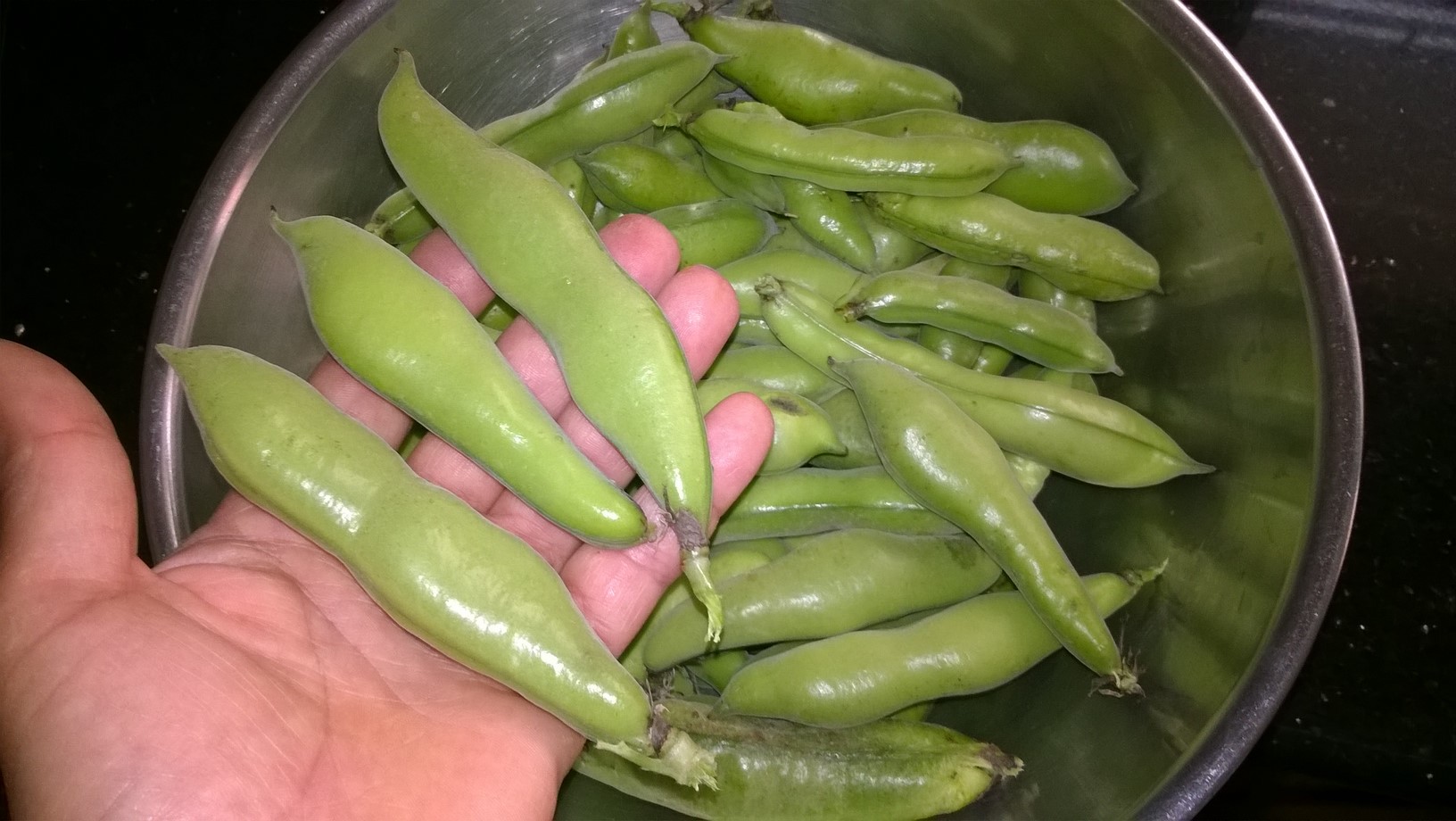Broad beans have been cultivated for thousands of years and the reason for this is simple, they are very nutritious, they are easy to grow, and they produce a large crop for the area they occupy. Broad Beans are a superb crop for smaller plots, producing high yields from a comparatively small area of your vegetable garden. They are best eaten freshly picked from the plant, so home-grown Broad Bean crops have a far superior flavour to those found in the supermarkets. Broad Bean seeds are cheap, easy to handle and simple to germinate and are the perfect vegetable crop for beginners.
. Broad Bean Plant Description.
Broad Beans and Their Nitrogen Fixing Properties
Broad beans "Fava beans" are one of the world’s most powerful nitrogen fixers! Once the plants flower and produced beans, broad bean plants fix nitrogen on their roots for the benefit of themselves. First nitrogen goes into pod production, then the plant releases nitrogen into the soil as it dies back. This process naturally enriches the soil, and provide food and energy for the next crop of plants. Not only broad beans enrich the soil, they also eliminate the need for artificial fertilisers, making them a hugely sustainable crop to grow!

Choose a well-drained site that has been thoroughly dug and ideally improved with garden compost or well-rotted chicken manure.
Watch How to Add Chicken Manure to The Garden Soil
Broad beans are available in many different varieties. Whether you want to grow broad beans in a small kitchen garden, or in your garden, there’s always one for the right space.
Broad Beans are normally sown in the spring from February to April. However, some varieties are particularly hardy and can be sown in autumn from October to November (provided that that soil is still reasonably warm). Autumn sowing will give you a head start and an early Broad Bean harvest.
Sow broad beans at a depth of 5cm (2") deep and a distance of 23cm (9") apart within each row and water well. Seeds will germinate within two to three weeks.
When sowing Broad Beans in early spring or late autumn, it is well worth putting cloches in place prior to sowing outdoors. These will warm the soil in advance, aiding germination and establishment of the plants during the earliest stages.
Watch How to Sow Broad Bean Seeds Video
I choose to direct sow broad bean seed either under cloches in late autumn or February, or without protection from March to April. Grow Broad beans in full sun on rich fertile, well manured soil. Choose a sheltered position away from strong winds.
. How To Support Broad Beans.
Broad beans plants are large and leafy. They can reach anywhere from 3 to 5 feet tall. The square, hollow, stems are rigid and require staking, although they will flop under the weight of the pods.
Broad beans will need support, and even some of the shorter varieties will need support in windy conditions. This is very easy to do. Insert a cane deep into the ground at each place where the beans are to be grown.
Nothing stronger is required, this will be enough to provide support to stop the plants toppling over. The canes can be put in place at any time before the plants reach 60cm / 2 foot high.
How to Sow Broad Beans Seeds Indoors
- Fill a 7cm pot with moised multipurpose compost.
- Make a hole in the compost about 4cm / 1½ deep and drop the seed in, it's not important which way round the seed goes.
- Fill the top of the hole with compost and gently firm the surface of the compost down.
- After mark the pots with the variety sown and the date.
- Place the pots in a cool position.
- The ideal soil temperature for germinating broad bean seeds is about 12°C / 54°F.
- As soon as the seedlings appear above the compost, make sure to move the pots to a position which gets lots of light and is also cool.
In order to give your broad beans seedlings the best chance of success, it is best to ‘harden them off’ prior to leaving them outside full time. About 7 days before planting your seedlings outdoors, help acclimate them to temperatures, sunlight, and wind. This is the process of hardening off, or gradually acclimating your new plants to outdoor conditions. These plants have spent their short lives in a warm, sunny, protected place and won't fare well if you don't expose them slowly to the elements. Before you intend to plant, put your transplants outdoors in an area where they'll be protected from the direct sunlight and wind. Leave them out for a few hours and bring them back inside. Repeat this each day, gradually increasing the amount of time they're outside and the degree of exposure to sun and wind. Gradual exposure helps your plants toughen up and reduces the possibility of injury. With proper hardening off, they’ll have an easier transition to the garden and begin producing sooner.
Keep Broad Bean plants well watered, particularly as the flowers begin to set.
. Health Benefits of Broad Beans.
Broad beans contain an amino acid called L-dopa, which stimulates the brain to make dopamine, the chemical associated with happiness. Broad beans are also rich in potassium, which can have beneficial effects on blood pressure. Eating foods rich in potassium is the best way of maintaining healthy potassium levels, rather than taking supplements.Watch 🌱 Home-grown Organic Broad Beans: 💥 Incredible Health Benefits You Need to Know! 🌱
. Broad Bean Pests and Diseases.
Broad beans can be susceptible from the following pests and diseases:. Black bean aphid/blackfly
Young shoots are often covered with masses of black aphids. These growing tips can be snipped off and disposed.
. Mice
Sometimes mice unearth the seeds as soon as they’ve been sown. If you notice this happening, it’s best to cover them with fleece or netting to prevent the mice getting in. Alternatively, sowing in Rootrainers and planting out once germinated is a goo preventative method.
. Chocolate Spot
Dark brown spots and blots on leaves develop and can sometimes kill plants in wet seasons. Infected plants should be destroyed.
Broad beans will be ready for picking about 3–4 months after sowing. When the beans begin to show through the pods, then it is time to pick them. If you squeeze the pod gently, you will also be able to feel how big the beans are. It’s better to have tasty tender small beans, than large tough ones! If the scar on the bean (the hilium) is black, then you have left it a little late to harvest and the bean will be tougher. You want to harvest when the hilium is still white. Remove the pods from the plant by pulling downwards and twisting slightly. Be careful not to damage or bend the stem. Broad beans mature in succession from the bottom of the plant upwards, so you will get several pickings from each plant.
Watch How to Harvest Broad Beans
Please let us know your thoughts, experiences, or questions in the comments below. If you like this, you can share with your friends!
Broad beans are a fantastic plant to grow in your garden. They’re easy to sow. They’re healthy and tasty to eat, and they improve your garden soil. Grow them and enjoy the results!
Happy Gardening!
This web site is a participant in the Amazon Services LLC Associates Program, an affiliate advertising program designed to provide a means for sites to earn advertising fees by advertising and linking to amazon. Some of the links to products on this site are affiliate links. These are products that I've used or recommend based from homesteading experience. I do make a small commission (at no extra cost to you) from these sales.(alert-warning)



